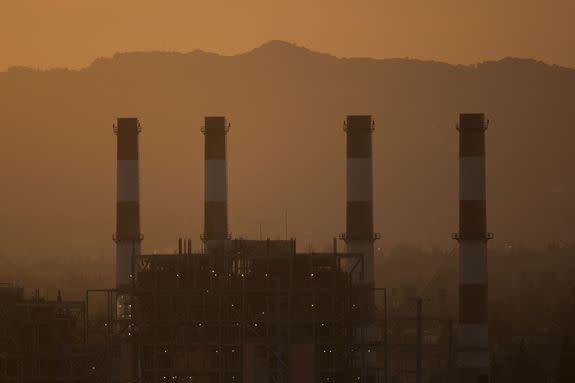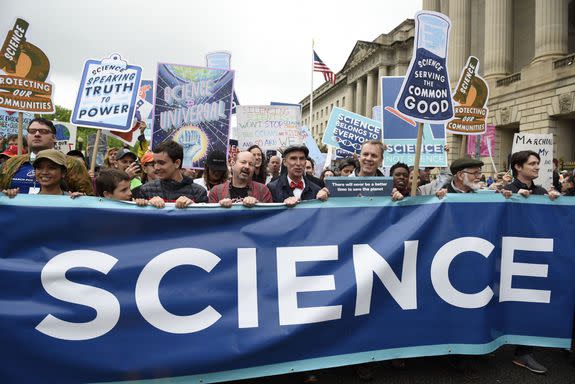EPA devotes money to buyouts while adding bodyguards for controversial new leader

There's no better way to measure priorities in Washington, D.C. than by scrutinizing agency budget proposals.
In the case of the Environmental Protection Agency (EPA), new figures show the Trump administration is putting a premium on cutting the agency workforce, reducing spending on climate change-related programs, while at the same time devoting more money to protecting the agency's leader, Scott Pruitt, from any security threats.
A letter sent on May 17 by David Bloom, the agency's acting chief financial officer, to agency leaders details how the organization plans to spend carryover funds from Fiscal Year 2016 through the end of Fiscal Year 2017. This refers to money that was not spent during the previous fiscal year, and is carried over into the next one, much like rollover minutes on a cell phone plan.
SEE ALSO: EPA chief denies carbon dioxide is main cause of global warming and... wait, what!?
The proposal includes savings generated by cutting spending for climate change-related programs, and devotes $12 million to workforce reshaping activities, including buyouts that would help reduce the number of employees at the agency.

Image: David McNew/Getty Images
The buyouts are likely to accelerate the process of draining the agency of its most senior, experienced workers in technical fields that can be difficult to impossible to replace. The EPA is responsible for everything from cleaning up hazardous waste sites to making sure air and water are clean to drink, and if scientists leave the EPA in droves, it could imperil its mission.
While reducing the organization's workforce, the Trump administration is also seeking to use $800,000 in carryover funds to pay for travel expenses incurred by security guards for EPA administrator Scott Pruitt. This is an unusual request for the EPA, whose leaders normally travel with a light security footprint.
Unlike previous administrators, however, Pruitt has asked for a protective detail that is on duty 24 hours a day, 7 days a week, rather than the door-to-door security provided to previous EPA leaders, including those under former president Barack Obama. Such protective details are typically reserved for those in national security positions or persons in the constitutional line of succession, such as the Secretary of State, Speaker of the House, and the Secretary of Defense.
In fact, a budget proposal the Washington Post obtained in April showed that while the administration wants to slash the agency's budget by at least a third, one of the only areas to get a funding increase would be Pruitt's security.
According to the New York Times, Pruitt is seeking to add 10 new full time employees to the agency's security office, along with money for infrastructure and operations staff. This would amount to at least a doubling of this office's staffing level, at a time when so many other parts of the agency would be seeing more empty desks with each passing week.

Image: AP/REX/Shutterstock
The budget cuts would touch virtually all areas of the EPA and would have profound impacts for many states, including eliminating climate protection grants, Great Lakes Restoration funding, and Chesapeake Bay cleanup programs.
Pruitt, who has said he does not believe human emissions of greenhouse gases are the main cause of climate change, contradicting thousands of climate science studies, has quickly become one of the most controversial cabinet members.
He received the greatest number of "no" votes during his Senate confirmation of any EPA nominee in history, and there have been protests against him and his agenda outside EPA headquarters in recent weeks.
WATCH: NASA timelapse shows just how quickly our Arctic sea ice is disappearing

